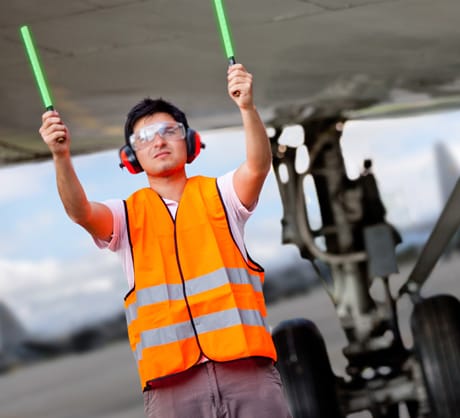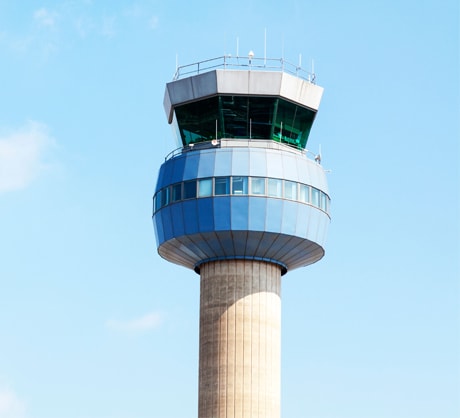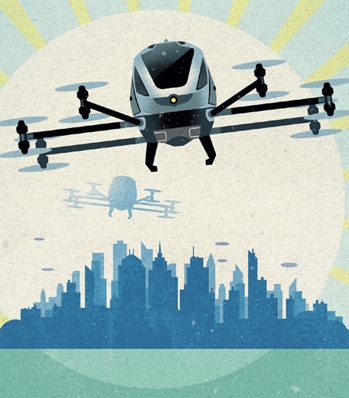Article

The future of mobility in aerospace and defense
Rapidly developing technologies in the future of flying cars
While flying cars may sound as if they belong in science fiction, rapidly developing technologies in aerospace and aircraft design seem to have brought them closer to reality—potentially helping to create a faster, cheaper, cleaner, safer, and more integrated transportation system. Below are a series of articles exploring autonomous aerial passenger vehicles and opportunities and challenges facing the next era of elevated mobility.
The future of flight: Five things Canadians need to know
By Gérald Faustino, National Leader, Aerospace & Defense, Deloitte Canada
This summer, my family and I flew on several short flights as part of our vacation. Most of us take air travel for granted, much as we expect goods to arrive after criss-crossing the globe when we make online purchases, or for our us and our luggage to arrive safe and sound at our destination. The fact we and the things on which we depend—personal or professional—need to move from one point to another is unlikely to change anytime soon.
What is likely to change in the near future is how we travel by air. That’s because the aerospace industry has been reimagining the future of air travel (what we’re calling elevated mobility), and some of the innovations—including autonomous aerial vehicles, electric or hybrid-electric vertical take-off and landing vehicles, and a combination of the two—are expected to take to the skies soon.
The aerospace industry in Canada contributed over $25Bn to GDP and 160,000 jobs to the Canadian economy. The industry is the leader among all other Canadian manufacturing industries in innovation and skills with over $1.4Bn in investments counting for close to a quarter of total manufacturing research and development (R&D), with R&D intensity 5x higher than the manufacturing industry average1. Here are five themes to consider how the Canadian aerospace industry will maintain this leadership position in the future of elevated mobility.
- 1. Safety first
- 2. It’s about moving ordinary people, and moving cargo
- 3. There will be structural change in the job market
- 4. Space is not the final frontier—but it is the next one
- 5. Get ready for new players and collaboration

At the forefront of this evolution in transportation is safety. At the 2019 Paris Air Show earlier this summer, we learned from speaking with Original Equipment Manufacturers (OEMs) and suppliers that although these new vehicles are highly innovative, what isn’t new is the laser focus on safety as the primary design. This is equally true of both manned or unmanned vehicles (onboard pilot, remote pilot, even autonomous). One panel discussion called for a consortium to certify a set of Artificial Intelligence (AI) algorithms that could be used in autonomous aircraft. These algorithms would be open-sourced and offer a safe framework for autonomous software developers. Canada is in a strong position to contribute to this effort given our leadership position and continued investment in the AI industry.
Regulators are sending the message that they’re open for business. A representative from one of the major transportation agencies told us they are ready to move through the certification process just as quickly as the OEMs are ready to deploy. Existing aerial helicopter laneways will be the basis for the routes. We also learned at the air show that agencies expect to recognize each other’s certifications, further reducing approval timelines. Despite the emphasis on speed to certification the agency acknowledged the OEM’s safety pledge and also sent the message that they will ensure transparency around accountability for our safety2.

Much of the discussion about the future of mobility revolves around how such aircraft will move people around cities, thereby resolving traffic and congestion-related issues in metropolitan areas. Less known is that the OEMS are designing elevated mobility solutions for the ordinary citizen, not just for the rich who can afford personal jets or helicopters. Anyone will be able to get to their child’s birthday on time from their workplace on the other side of town, or catch a ride at convenient rooftop locations that are accessible to all, unlike private airports. In Canada, we’ll be challenged to achieve passenger scale to drive down costs, given our limited population size and density.
There will be an emphasis on transporting cargo, a lot of the discussion centers around the use of drones to make light package deliveries. What we’ll see more are aircraft to move heavy cargo. Canada offers a competitive advantage for OEMS that want to establish their manufacturing and testing operations given our large land mass, remote areas, and severe weather variations from winter to summer. Our environment is ideal to test ruggedized applications that are designed to move heavy cargo in and out of harsh environments.

With the introduction of these new aerospace technologies and supporting ecosystem, a step change in human resourcing will be required. Many more skilled people will be needed to handle the demands, and industry, government, and schools, colleges, and universities in Canada will need to collaborate to help make this happen.
At least one field in Canada is already suffering a pressing labour shortage: air traffic controllers. We’re already having to limit the arrival of traffic during certain periods at major airports because of labour shortages3 in this field; what will happen when thousands if not tens of thousands more aircraft take to the air?
Another challenge that will be further complicated is diversity and inclusion within the industry. We’re hearing more frequently that the labour gap will be so large, we’ll need to start encouraging children at the elementary-school level, especially girls and visible minority youth, to pursue careers in STEM (science, technology, engineering, and mathematics) in an interdisciplinary, theoretical, and applied manner.
But encouraging our young people to pursue these studies is not enough to maintain Canadian leadership in the aerospace industry, and in the emerging segment of elevated mobility. We’ll need to focus even more on reversing the brain drain to retain the bright young minds that will drive this segment’s growth. At present, it’s estimated that one-in-four of STEM graduates are choosing to leave Canada after they complete their studies, with the number for software engineering even higher at roughly 2-in-3 graduates4.

The image that springs to mind for many people of flying cars or personal aircraft is of vertical takeoff and landing aircraft in urban settings. A less-known image is of people and cargo being transported in a ballistic aircraft into the upper atmosphere, then pivoting to return to Earth to travel across long distances. There is an emphasis in the industry to bringing these latter types of solutions to the market.
What’s more, both public and private industry representatives at the Paris Air Show communicated a vision of people travelling, living, and working in space; the level of excitement at the show recalled that of the space race in the 1950s and 1960s. It’s even estimated the space economy, once it takes hold, will triple in size over the next 20 years. Canada is well positioned to capture growth in this segment, with the Government of Canada having invested $2.16 billion in a space strategy focused on scientific and technological innovation and continued involvement in the International Space Station program5.

To realize the vision of the elevated mobility economy, we’ll see more traditionally non-aerospace companies entering the sector. For example, utility companies are being tapped to supply the sector’s increasing electrification needs. Non-aerospace companies could approach this new and growing area by entering into partnerships or joint ventures with elevated mobility operators, as opposed to making their own greenfield investments, or by entering through merger and expansion.
The disruptive nature of these technologies to traditional modes of transportation will drive the expansion of the buyer universe for elevated mobility companies as M&A targets. We’ll see acquisition multiples pushed higher as acquirers operating in adjacent industries seek to enter the sector. Whether the combination or collaboration model is an alliance, partnership, joint venture, merger, or acquisition, we expect to see the need for the new ecosystem to grow and encourage a higher level of collaboration.
The prospect of a future with autonomous, vertical takeoff-and-landing vehicles that can speed us up and away to destinations near and (for now) not too far is exciting. The benefits will be felt by everyone, in ways that people don’t expect, and bring new challenges and opportunities for us in Canada. Are you ready?
1https://www.ic.gc.ca/eic/site/ad-ad.nsf/eng/h_ad03964.html#p3
2https://phys.org/news/2019-06-safety-pollution-agenda-paris-air.html
3https://www.skiesmag.com/news/nav-canada-feeling-effects-of-labour-shortage/
4https://www.theglobeandmail.com/business/technology/article-canada-facing-brain-drain-as-young-tech-talent-leaves-for-silicon/
5http://www.asc-csa.gc.ca/eng/publications/space-strategy-for-canada/02-message-from-the-minister.asp
Future of elevated mobility

Major aircraft manufacturers, technology startups, and network operators are taking the business of urban aerial transportation seriously and investors have already put hundreds of millions of dollars toward research and development. Despite the progress, there are various challenges to consider with respect to consumer acceptance, safety, regulations, infrastructure, and air traffic management.

There is an important and exciting dialogue occurring between industry players, leaders, and investors about the future of transportation. Innovative technology and consumer trends are changing the speed of development. It won’t be long before entirely autonomous and tailored systems will be ready to transport individuals by land and air. This series aims to map out what that transformative future will look like and how soon it will be a reality.

Infrastructure barriers to the elevated future of mobility
Read more >>

Technological barriers to the elevated future of mobility
Read more >>

Psychological barriers to the elevated future of mobility
Read more >>

Managing the evolving skies
Read more >>

Elevating the future of mobility
Read more >>

Infrastructure barriers to the elevated future of mobility
While several challenges to urban air mobility (UAM) taking flight remain, one key factor is infrastructure. Manufacturers have made progress on the aircraft themselves, but the infrastructure necessary to support and enable scaled people and cargo transportation in urban and suburban areas is not yet in place.
This article aims to explore what must happen—on the ground and over the airwaves to enable a future that includes electric vertical takeoff and landing (eVOTL) aircraft. Key challenges include:
-
Designing and implementing the required ground infrastructure
-
Developing safe and efficient eVOTL operations which requires robust communication and unmanned air traffic management (UTM) system
-
Making urban air transport seamless, requiring a well-developed mobility-as-a-service (MaaS)
-
The pivotal role of cities in making UAM a reality—and a success

Technological barriers to the elevated future of mobility
Companies are developing flying vehicles capable of carrying passengers and cargo in urban environments, with vertical takeoff and landing capabilities for flexibility and safety. So what's keeping them grounded? Several key technological barriers need to be overcome before air taxis take to the skies and enable the future of autonomous vehicles to take flight.
This article explores technological barriers currently hindering companies that want to take part in this ecosystem—successfully lifting people and products in flying vehicles and transporting them safely, affordably, and expediently to their destinations—and some approaches to addressing these barriers.

Psychological barriers to the elevated future of mobility
Are
consumers ready to take to the skies?
Flying vehicles are expected to be ready to enter the future mobility landscape soon. However, a
new global survey shows that consumers are highly skeptical about the future of autonomous
vehicles, especially when it comes to perceived safety. To help instill public confidence—and
ultimately foster adoption regulators, creators, and operators will all play an important and
unique role.
This article explores why popular consumer acceptance will be key to getting the elevated future of mobility off the ground and how industry stakeholders can take part.

Managing the evolving skies
Unmanned aircraft system traffic management, the key enabler
As aerial technology is transforming the way people perceive aviation, the rise of flying
vehicles, including passenger and delivery drones with vertical takeoff and landing capability,
has demonstrated strong potential to address urban congestion, improve logistics, and create new
products and markets.
This article explores challenges and solutions critical to the success of all stakeholders in the unmanned aerial vehicles (UAVs) ecosystem and illustrates how a UAV traffic management (UTM) system can ensure safe and efficient operations for the future of autonomous vehicles.

Elevating the future of mobility
Passenger drones and flying cars
In the midst of an already dramatic transformation in how people and goods move around, a new
class of vehicles is emerging: flying vehicles. Advances in the development of urban air travel
could add an entirely new dimension to an already complex landscape as the future of autonomous
vehicles unfolds.
While still nascent, this mode of travel represents a significant business opportunity for those who can design, build, operate, maintain, and deliver passenger drones, urban air travel and related services.
This article explores the future of autonomous vehicles, specifically flying vehicles, and the emerging market for passenger drones and urban air travel.

